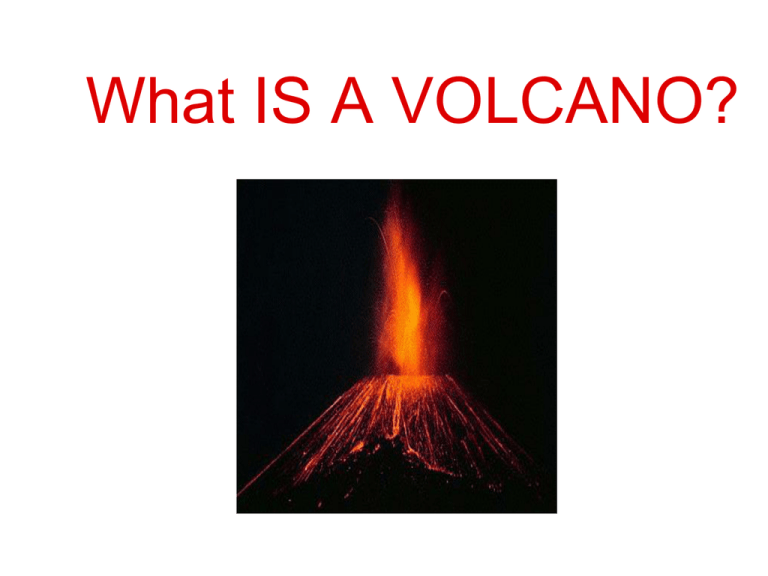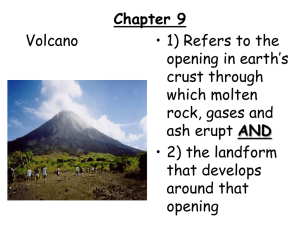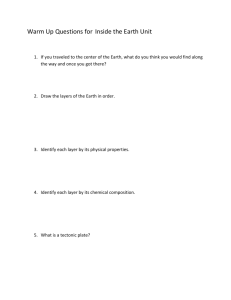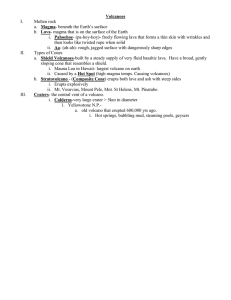What IS A VOLCANO?
advertisement

What IS A VOLCANO? A volcano is a place where magma reaches the surface through a conduit and bec0mes lava. … Window into the Earth’s interior. There are three types of volcanoes: Shield Volcano: A gently-sloped volcano. Cinder Cone: A volcano made of cinders that are blown into the air. Composite: A volcano built of alternating layers of cinders and lava. What kind of volcano is this? Mount Shasta is a composite volcano. Over the last 10,000 years, Mt. Shasta has erupted on average once every 800 years. During the 3,500 years the volcano has erupted about once every 300 years. The most recent eruption may have occurred in 1786 A.D. What kind of volcano is this? Diamond Head is an eroded Cinder (Tuff) Cone. Early sailors mistakenly thought glistening calcite crystals inside the tuff rocks were diamonds, leading to the incorrect name. Diamond Head formed when hot magma rising up a conduit hit ocean water, causing large explosions that threw exploded magma particles (tuff) into a broad ring. What kind of volcano is this? Kohala is a shield volcano. • Kohala is the oldest of the subaerial volcanoes that make up the Island Of Hawaii. Kohala is considered to be extinct because it has not erupted for 60,000 years. obsidian pumice Examples of volcanic rocks volcanic glass Q.Where are most found? A.The “ring of fire” What comes out of volcanoes via eruptions? • Lava flows • Gases (primarily H2O vapors) • Pyroclastic materials: rock and lava fragments: ash; pumice; lapilli (little stones); cinders; bombs Types of Lava Flows • Pahoehoe • A’a • Blocky • 90% of lava is Basaltic ‰ PAHOEHOE – has a shiny, smooth, glassy surface. It tends to be more fluid (lower viscosity), hence flows more quickly and produces thinner flows (typically 1-3 m). ‰ ‰ Pahoehoe A’A – a rubble flow, with a molten core, with higher viscosity (but same composition) which, therefore, tends to move slowly and produce thicker flows (typically 3-20 m). A’a BLOCKY – similar to A’a, but even thicker (>20 m), with a blocky rather than rubbly surface. Andesites, dacites and rhyolites tend to form blocky flows. Blocky





